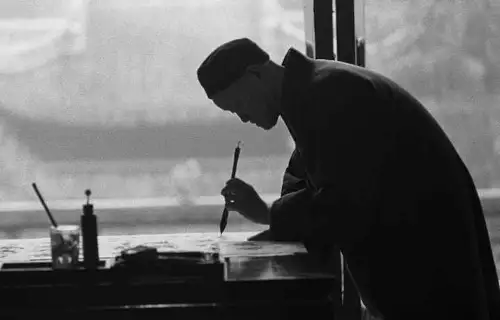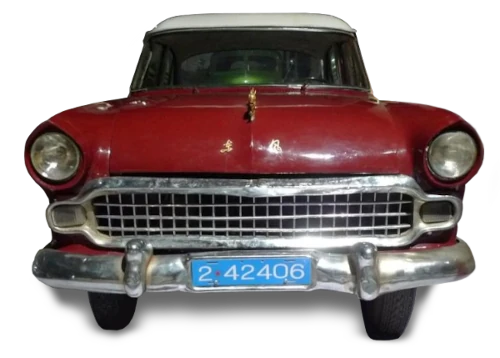Professional Chinese Translation Services
Halifax provides professional Chinese translation services.
Translation and editing, certified translation or Chinese interpreter, simultaneous or consecutive, online or live. We translate Chinese to English, Spanish, French, German, Italian, Russian, Albanian, Serbian and many other languages.
Chinese is one of the widest-spoken languages in the world, and one of those we translate most. As a rising economic powerhouse with almost 1.4 billion inhabitants, China and the Chinese language are influential factors everywhere in the world. You can read below what our translator writes about the language.
All Chinese language services
We offer a comprehensive set of professional Chinese translation services including:
- Chinese document translation
- Certified Chinese translation
- Revision, editing or proofreading of Chinese documents
- Chinese document conversion
- Chinese interpreting, online or live
- Video translation & transcription from and to Chinese
Our prices are among the lowest you will find for a reliable professional Italian translation service. See our prices page for details.
The Chinese language – our translator’s viewpoint
We asked one of our senior translators, a Chinese translation professional, to tell us something about her language. She studied it at university and has worked with it professionally for over 15 years. Here is what she told us.
What special challenges do you face when you translate or interpret Chinese?
As a professional Chinese translation specialist I can tell you of our typical difficulties. When I translate English to Chinese or Chinese to English or other western languages, the contrast between the pictogrammatic and phonetic symbols can be awkward. One Chinese character can carry its meaning alone, or it can make up a single word in combination with two or more characters. Then again, Chinese words don’t change by gender, number or case, sentences have a fixed order, and attention must be paid to the wider context, which can be a problem for an interpreter, especially a simultaneous interpreter.
Chinese phonetics are based on well-established rules of tonal pronunciation (even, rising, rising-falling, falling). Words that are pronounced the same phonetically but have different tones have different meanings, which further complicates interpretation. For an interpreter to translate English to Chinese, she cannot be tone-deaf! You can see that, whether translating or interpreting, you must be prepared for a real challenge, and if you choose to master this language and work in translation you must be ready to constantly learn and improve.

How old is the Chinese language?
It is believed that the first Chinese inscriptions (hanzi) date back to 4,000 years ago, in the Shang Dynasty (18th – 12th century BC). They were found on the bones and shells of turtles used for divination. Chinese belongs to the family of Sino-Tibetan languages, whose origin and development is still debated by many linguists. It had a strong influence on the development of neighbouring languages like Korean and Japanese.
Can you tell us more about Chinese writing?
The development of Chinese characters through history is interesting and may be a key to understanding this language. The characters can be divided into three types. First, there are a small number of pictograms with obvious images of objects and phenomena (man 人, water 水, rain 雨, fire 火). Then there are ideograms – associative stacked characters created by a combination of pictograms (e.g. bright, ming, 明, created by a combination the characters denoting the sun and the moon ).
Thirdly there are the more numerous phonoidograms, consisting of a part (a radical) bearing the meaning and a part bearing the utterance (example 淋, lin, downpour – left is the radical signifying water and right is the carrier of the pronunciation lin, which stands for forest when used as an independent character 林 (two trees). There are over 200 radicals.

Chinese characters have a complex form (fanti 繁体字) and a simplified form (jianti 简体字). The complex form of writing is still in use today in Hong Kong and Taiwan and in texts in ancient Chinese literature. In the 1950s, a simplified letter was introduced into modern Chinese to advance literacy, while in Hong Kong and Singapore a complex letter is used which is read from right to left.
Pinyin (a Latin phonetic system introduced in 1958 that corresponds to the Mandarin dialect) is used for Chinese text input and to learn the language more easily for foreigners and non-Han nationals. The Han is the largest national group in China, hence the term hanyu 汉语 – the Hans’ language – is also used to mean Chinese.
The present letter form was established during the Han Dynasty (206 BC – 202 AD). Throughout its long and rich history there have been several attempts to reform the letters, but these have ultimately been reduced to a list of existing characters. The Chinese script has about 60,000 characters. Fortunately, you only need to know about 4,000 of this huge number for everyday use, or twice as many for specific areas of expertise.
The Chinese script is the same for anyone who speaks Chinese, no matter what dialect they speak. Modern Mandarin Chinese spoken today evolved from the Beijing dialect, spoken in north-eastern China. It is officially used in China, Taiwan and Singapore.

Are there many Chinese dialects?
Chinese is spoken by around 16% of the world’s population, some 1.3 billion people. These are mostly Chinese concentrated in a small number of countries: China, Indonesia, Malaysia, Singapore and the Philippines.
China itself has 55 national minorities, each with its own language. Twenty-three of them have their own script and there are 200 dialects, which can be classified into seven groups: Mandarin, spoken by about 730 million people; Yue (Cantonese) with 80 million; Xiang (Hunan province) about 35 million; Min (Taiwan) about 50 million; Gan, about 20 million inhabitants, Wu (Shanghai) about 90 million; and Kejia (Hakka nationality) around 35 million speakers.
These dialects show strong variations, sometimes so much so that people from different parts of China do not understand each other. It is not uncommon that when you travel to different parts of China, you find people on the train using dictionaries to communicate more precisely.
In Canton (Chinese Guandong Province) and Hong Kong, as well as in Macau, the majority of the population speaks a Cantonese dialect that is quite different from Mandarin Chinese, which has five tones while Cantonese has nine. You can see that when we translate English to Chinese, we have to be aware of exactly whom we are translating for.
Fortunately, everyone uses the same letters, and Mandarin Chinese is used in schools and for official use.
China
China is the most amazing country. If you are unfamiliar with China but would like to know more about it, try reading Alex Waltner’s Swedish Nomad blog, there are a lot of interesting facts about the country.



